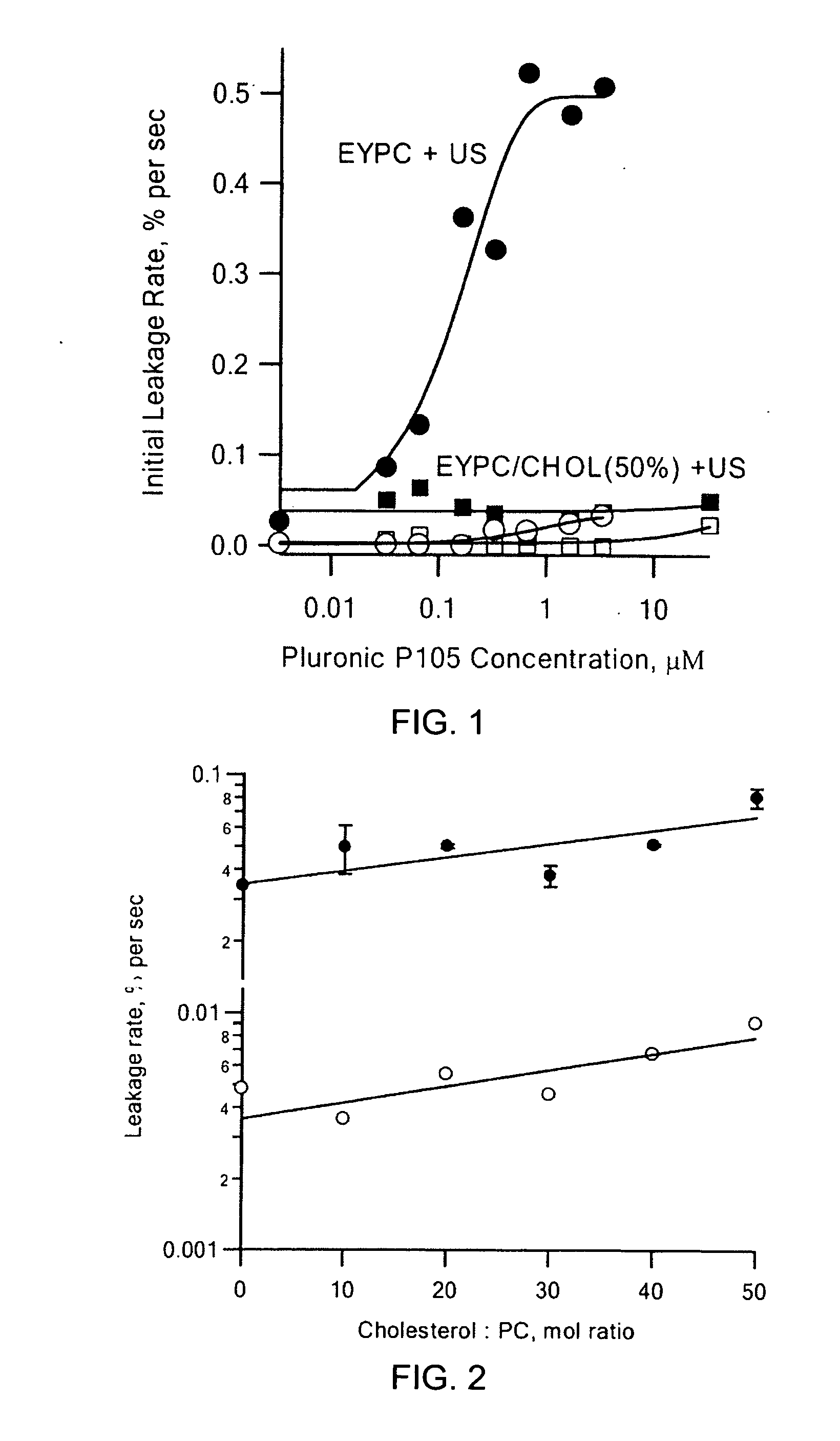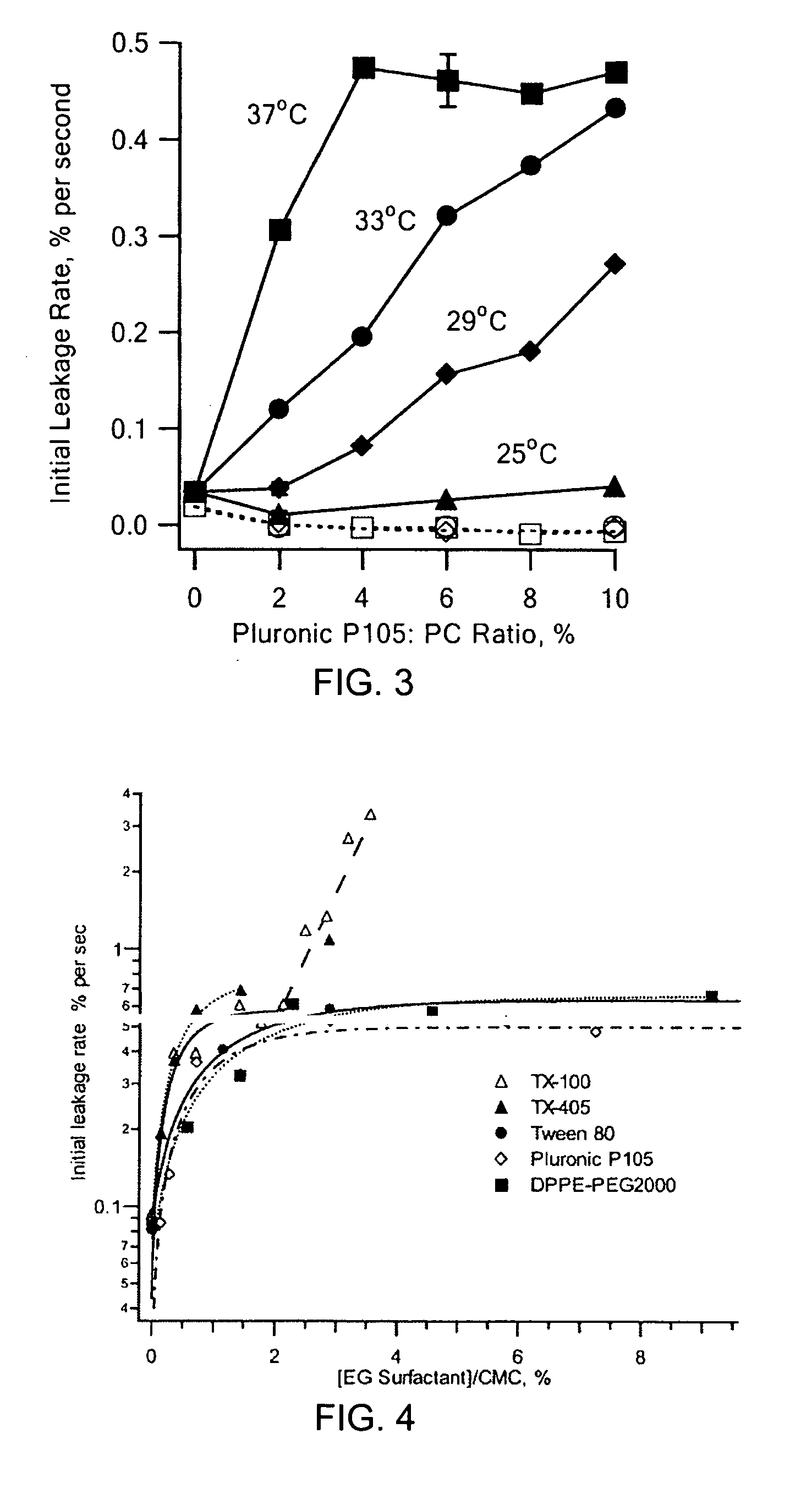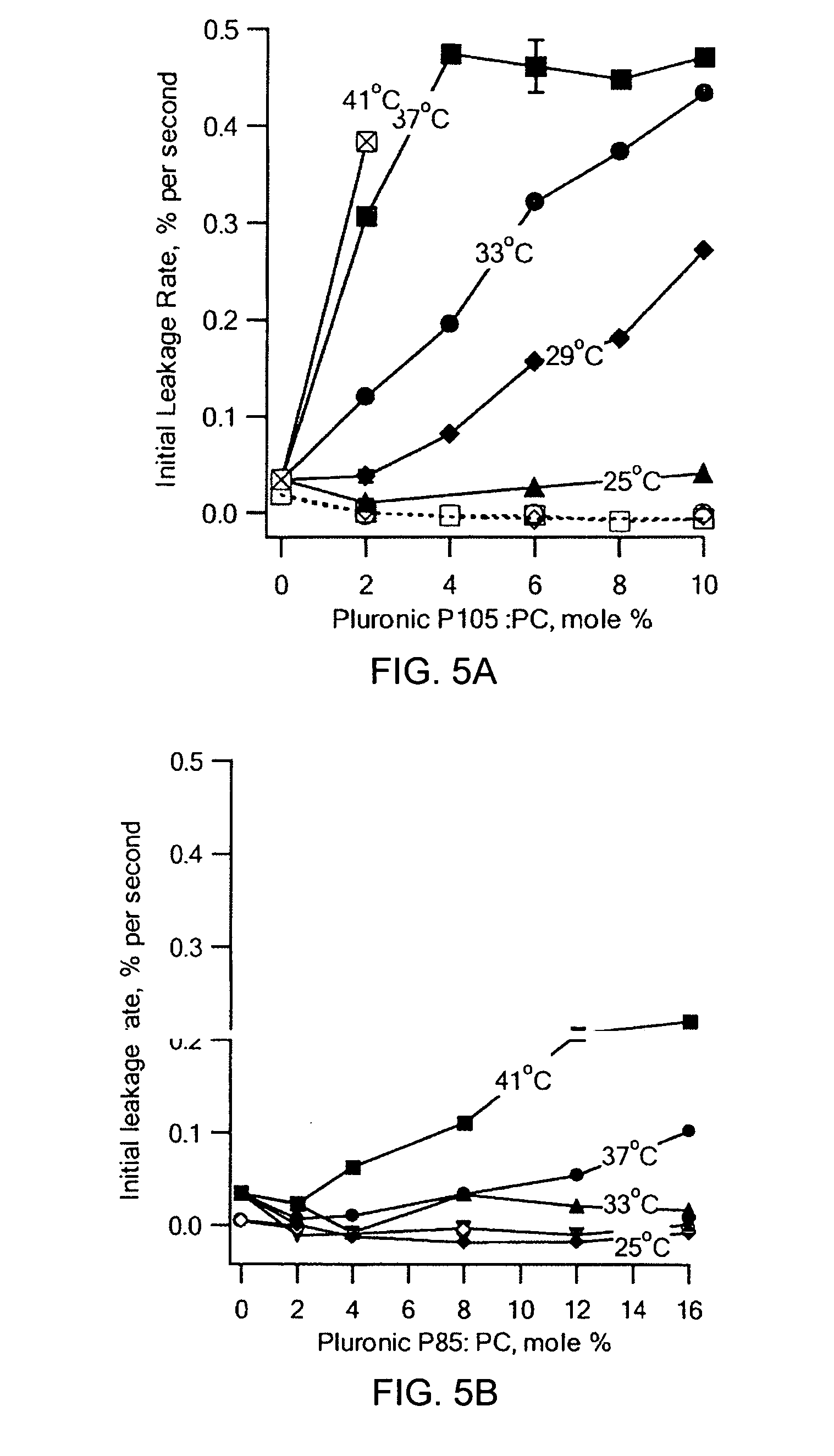Responsive liposomes for ultrasonic drug delivery
- Summary
- Abstract
- Description
- Claims
- Application Information
AI Technical Summary
Benefits of technology
Problems solved by technology
Method used
Image
Examples
example i
Preparation of Liposomes
[0027] LIPIDS AND CHEMICALS: Egg yolk PC was purchased from Avanti Polar Lipids (Birmingham, Ala.). PLURONIC® P-105 was a generous gift from BASF Aktiengesellschaft.
[0028] Stock lipids, and / or PLURONIC® P85, and P-105, were dried from chloroform solution under nitrogen and then under vacuum overnight. For permeability measurements, the lipids were vortex mixed and resuspended in a 50 mM calcein solution. The lipid mixture was then passed through two stacked polycarbonate filters (NUCLEPORE® 100 nm, Whatman Inc., Clifton, N.J.) nineteen times in a “mini-extruder” (Avanti Polar Lipids, Birmingham, Ala.) [14]. Unentrapped calcein was then removed by size exclusion chromatography (SEC) in a SEPHADEX® G50-packed (20-80 μm) 0.9×10 cm column (Aldrich), and eluted with an isotonic buffer (5 mM HEPES, 0.6% NaCl, 1 mM EDTA, pH 7.6).
example ii
PLURONIC® P-105-Enhanced PC Liposome Permeabilization
[0029] ULTRASOUND APPARATUS AND FLUORESCENCE MONITORING OF CALCEIN RELEASE FROM LIPOSOMES: The 20 kHz ultrasonic processor (Model VCI30PB, Sonics & Materials, Inc., Newtown, Conn.) was immersed into a polystyrene cuvette through a clearance hole in a TEFLON® cap, while the cuvette was held in the fluorimeter, an SLM Aminco 8000. Excitation and emission wavelengths were set at 488 nm and 520 nm, respectively. The probe was immersed approximately 1 cm into a 3 mL sample, initially containing only buffer and a magnetic stir bar. After adding 60 μL of liposome stock solution (ca. 0.06 pmole lipid), the fluorescence signal was allowed to stabilize for ca. 100 seconds. Then, the sample was sonicated for 5 minutes at 20% of full sonicator power and 25% duty cycle (approximately 2 W / cm2). At the conclusion of each experiment, the detergent TRITON® X-100 was added to rupture the liposomes completely and to achieve complete calcein releas...
example iii
Effect of Cholesterol Concentration on Permeabilization
[0031] Liposomes were prepared according to Example I and analyzed as in Example II.
[0032] It is commonly known that cholesterol acts to make biological membranes more rigid such as those found in eukaryotes. The presence of cholesterol in the present system is therefore predicted to increase the rigidity of the liposomes; however, it was not known how this affects permeabilizability of the liposomes with dopant added. Thus, phosphatidyl choline (“PC”) liposomes containing different percentages of cholesterol were prepared and sonicated at 20% power (approximately 2 W / cm2) with the Sonics & Materials, Inc. probe sonicator. The results are depicted in FIG. 2. As shown in FIG. 2, insonation (●) or no insonation (∘), the initial leakage rates show a slight increase with increasing cholesterol concentration, indicating that inclusion of cholesterol in the liposomes does not prevent ultrasound-induced release. However, the initial...
PUM
 Login to View More
Login to View More Abstract
Description
Claims
Application Information
 Login to View More
Login to View More - R&D
- Intellectual Property
- Life Sciences
- Materials
- Tech Scout
- Unparalleled Data Quality
- Higher Quality Content
- 60% Fewer Hallucinations
Browse by: Latest US Patents, China's latest patents, Technical Efficacy Thesaurus, Application Domain, Technology Topic, Popular Technical Reports.
© 2025 PatSnap. All rights reserved.Legal|Privacy policy|Modern Slavery Act Transparency Statement|Sitemap|About US| Contact US: help@patsnap.com



